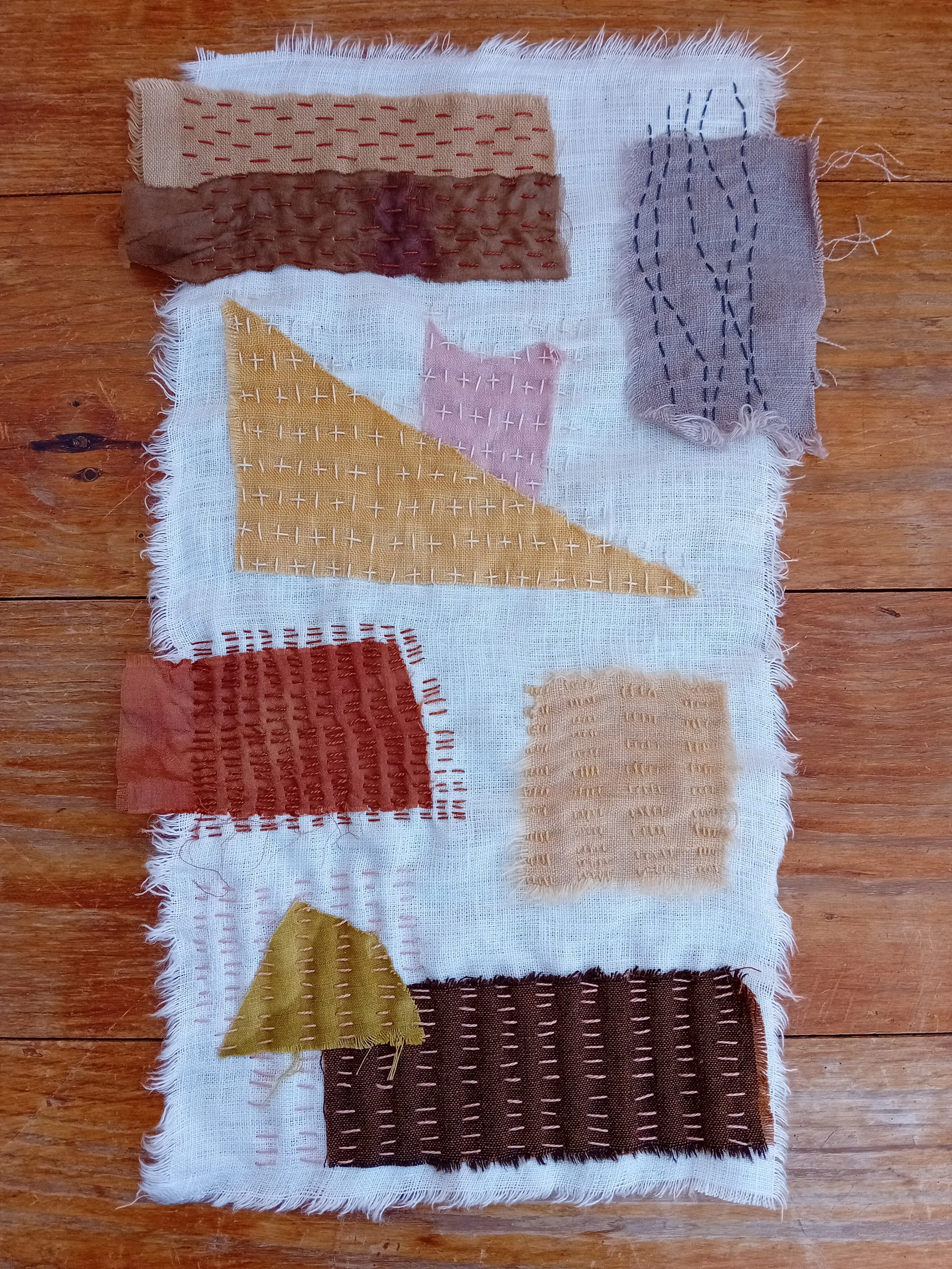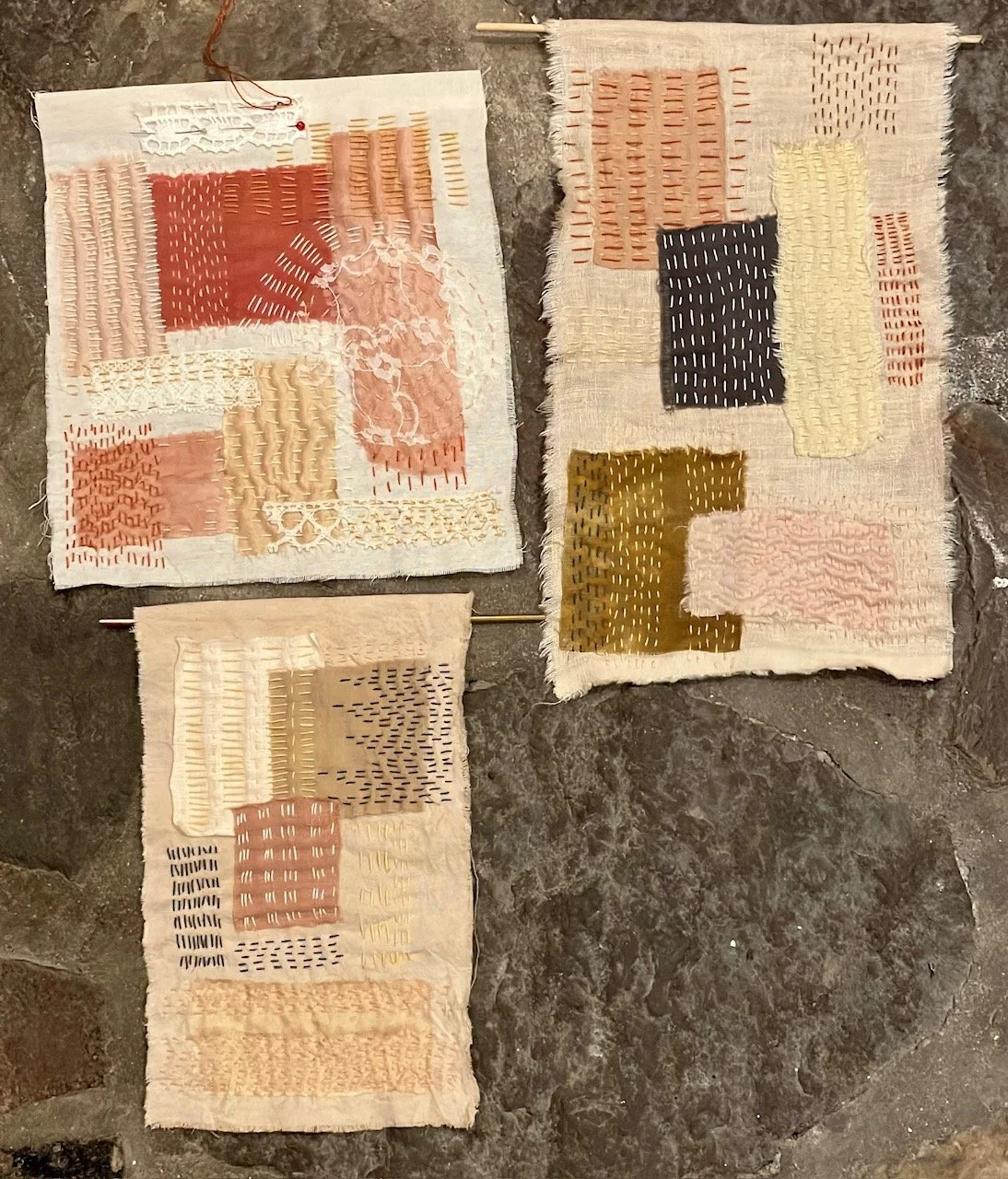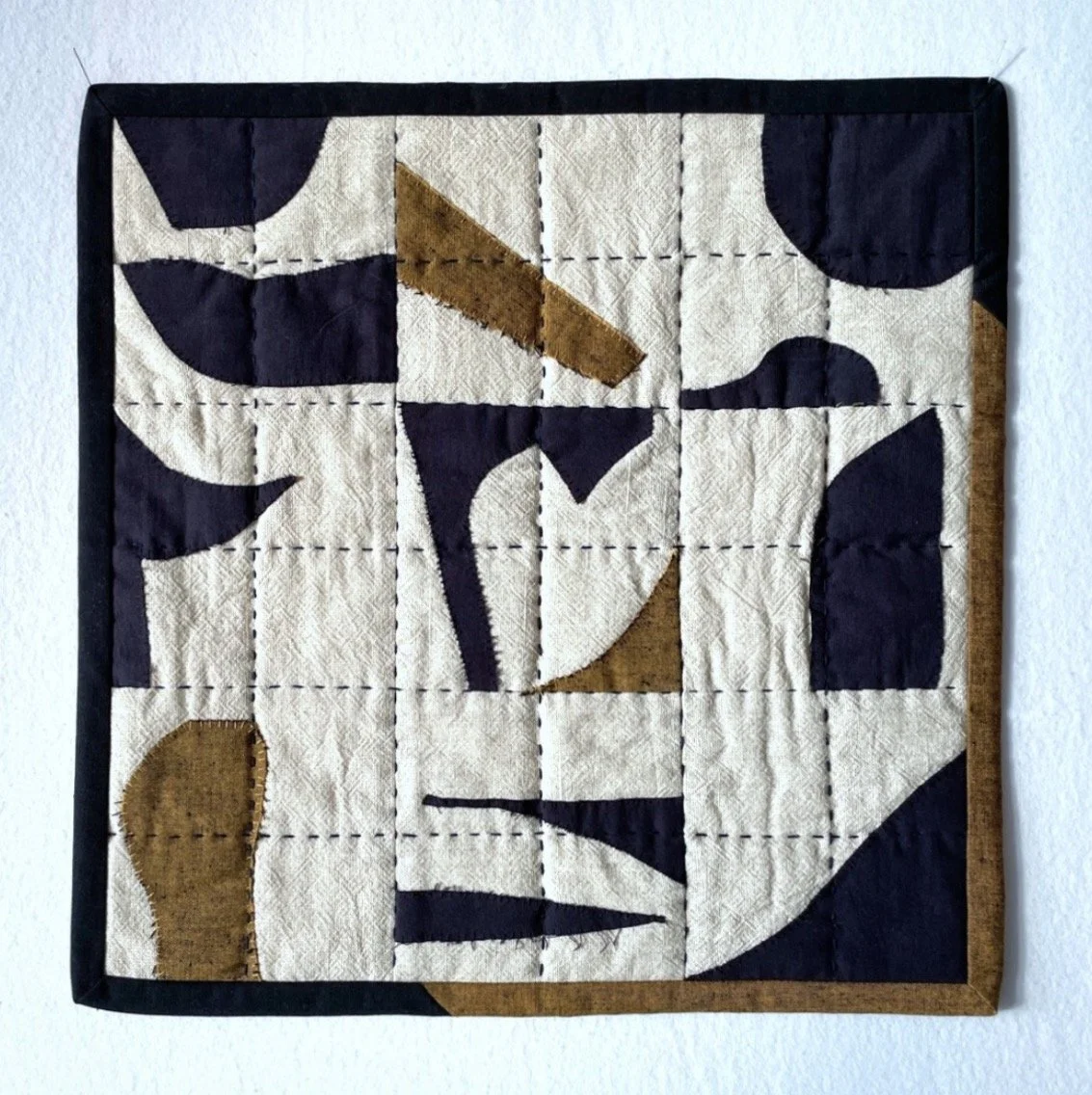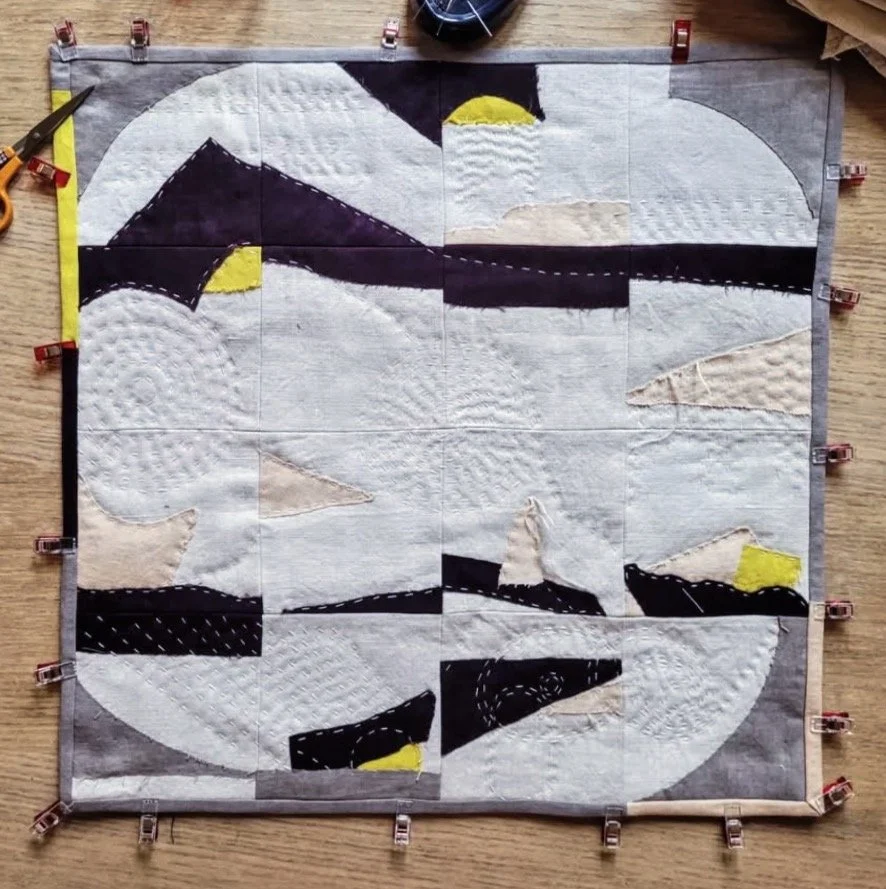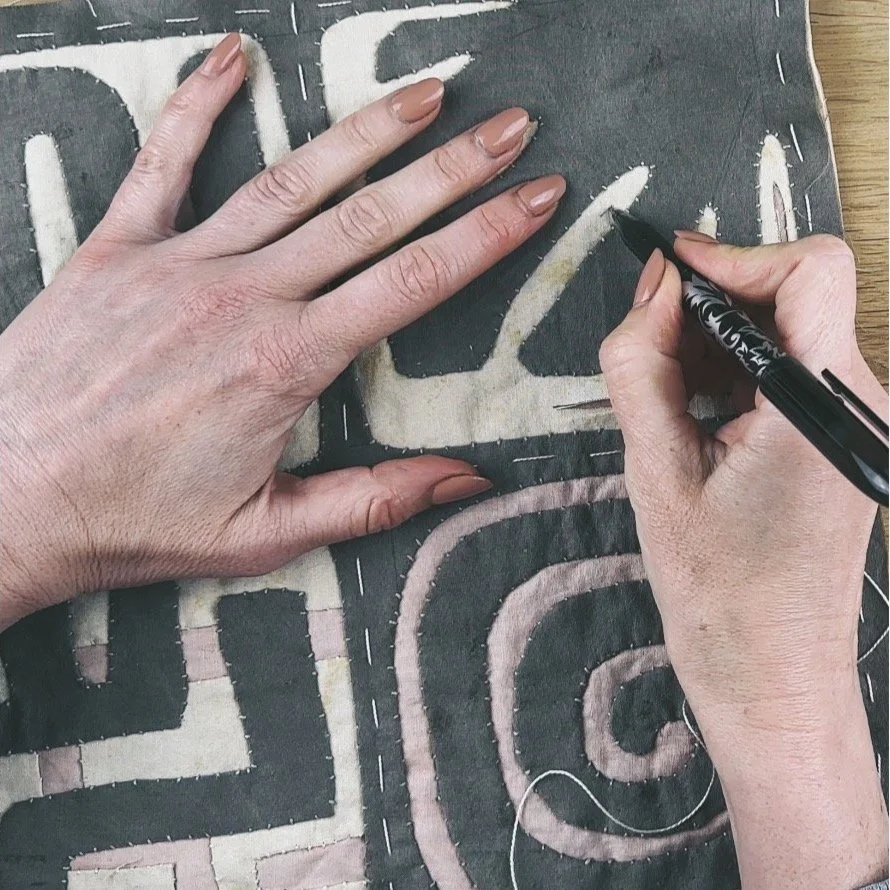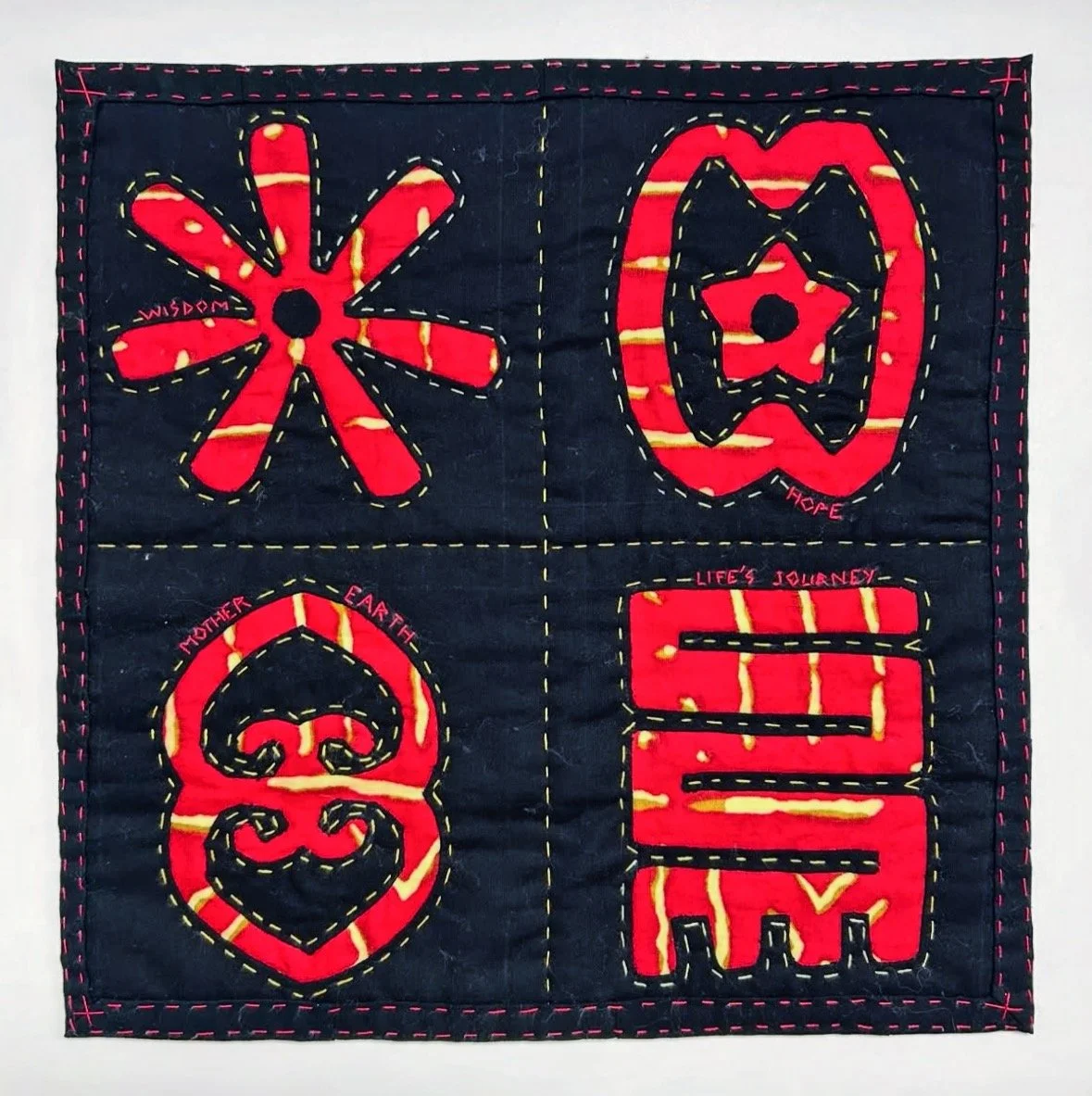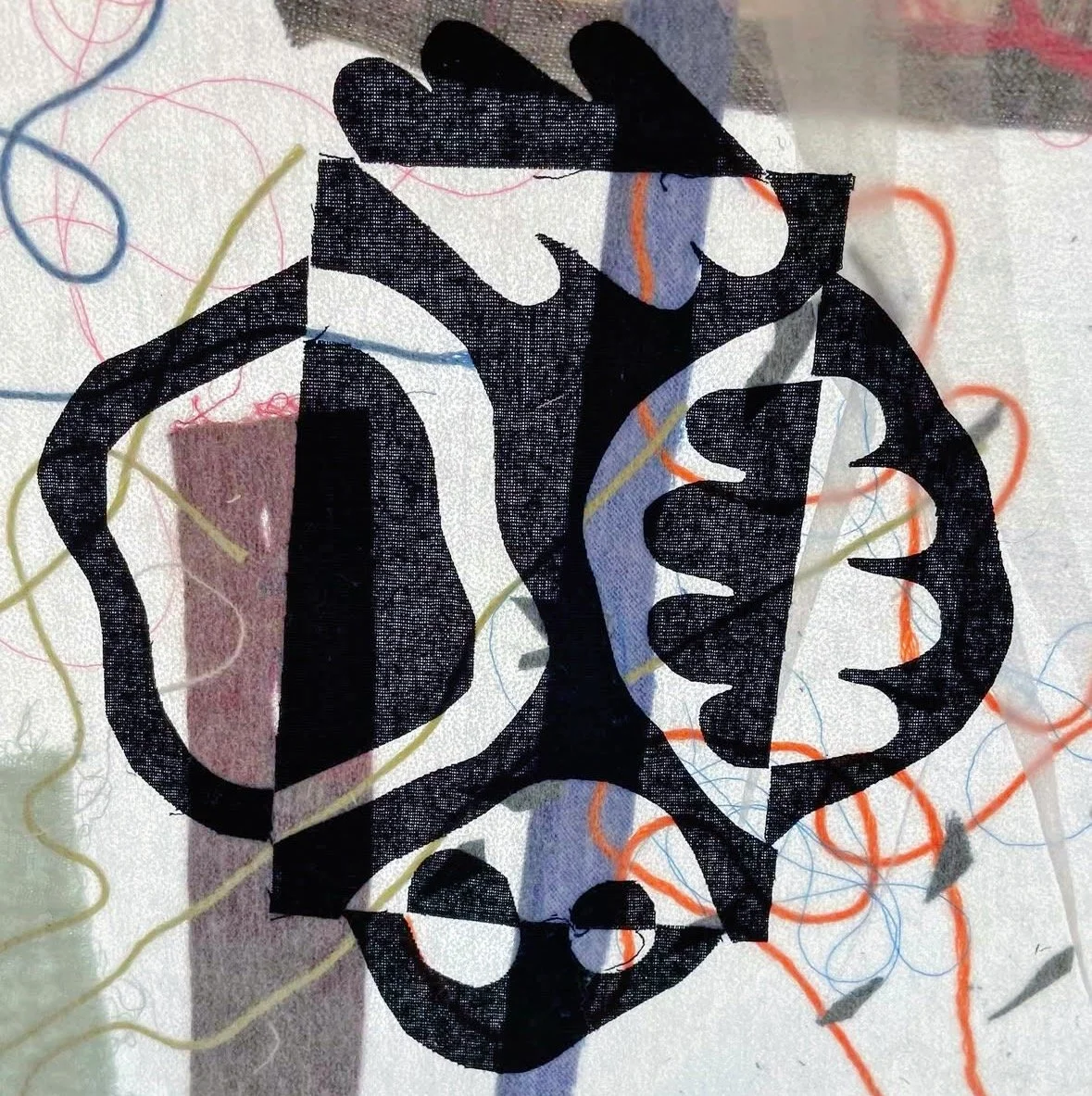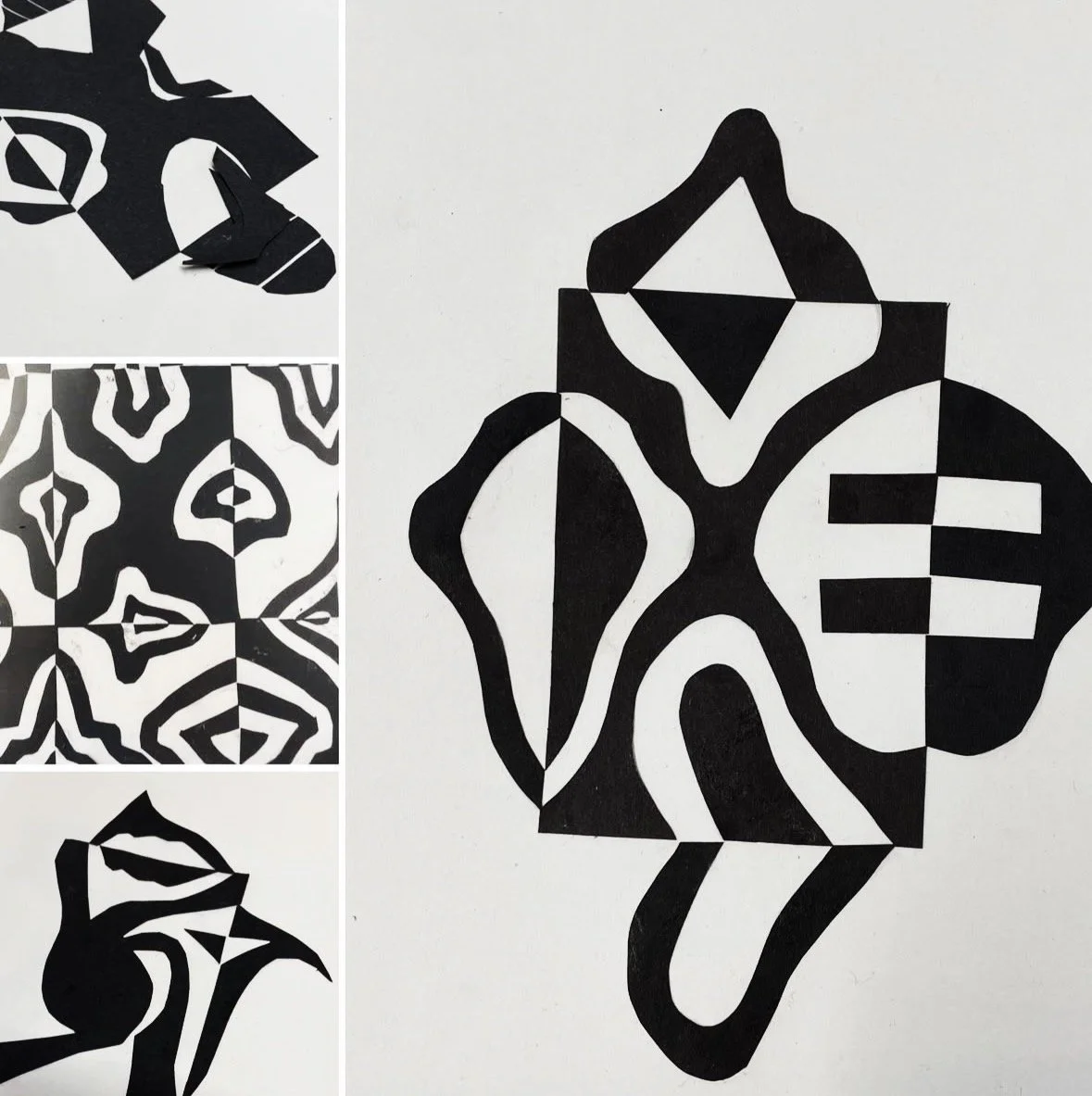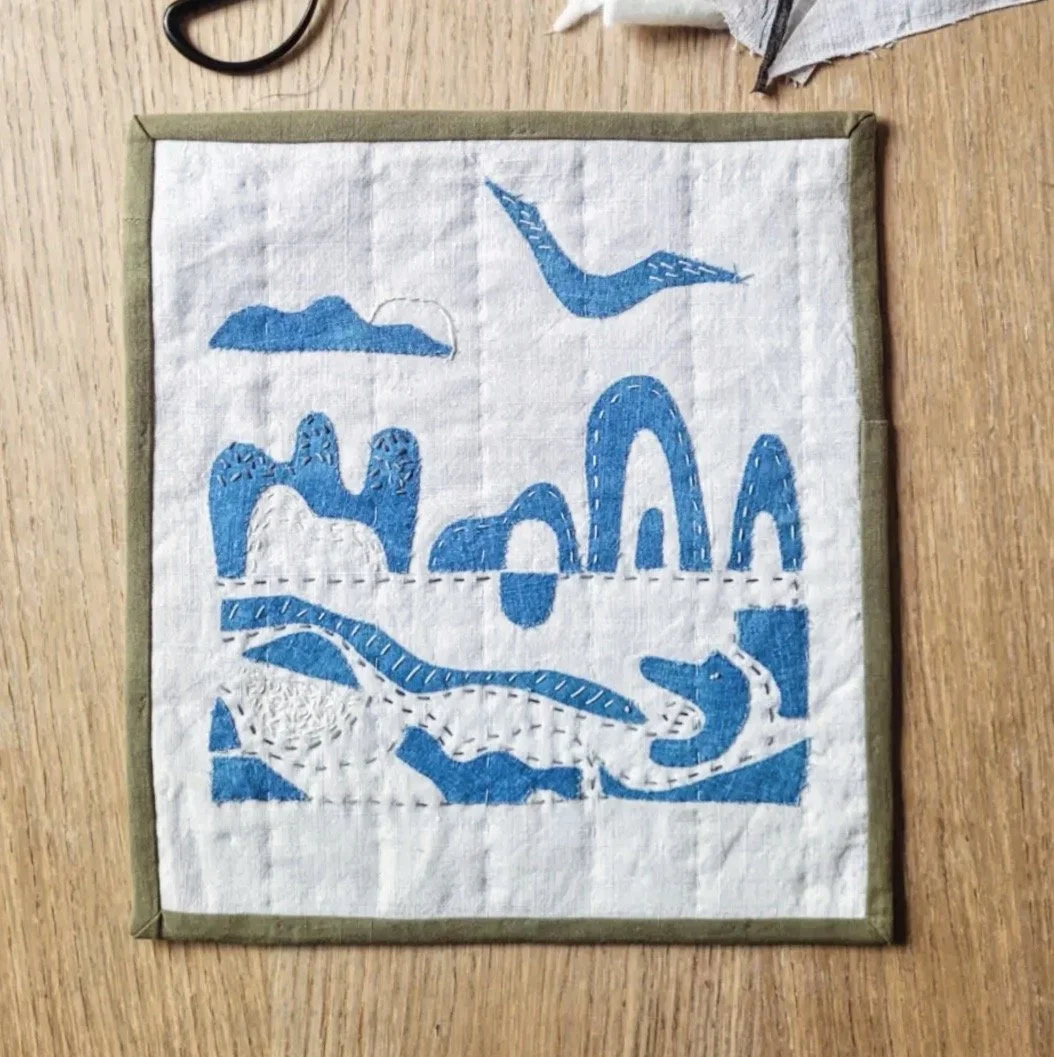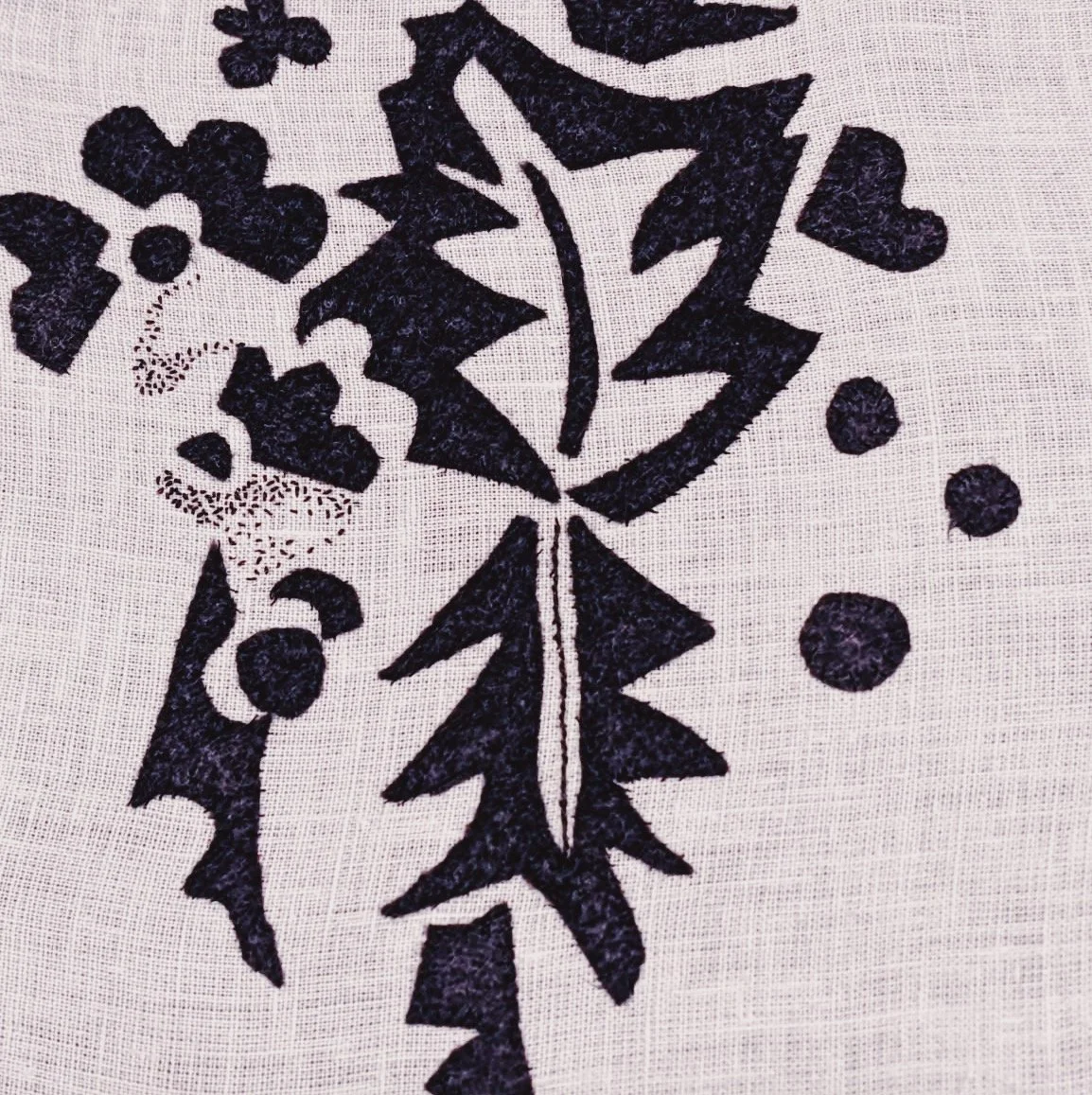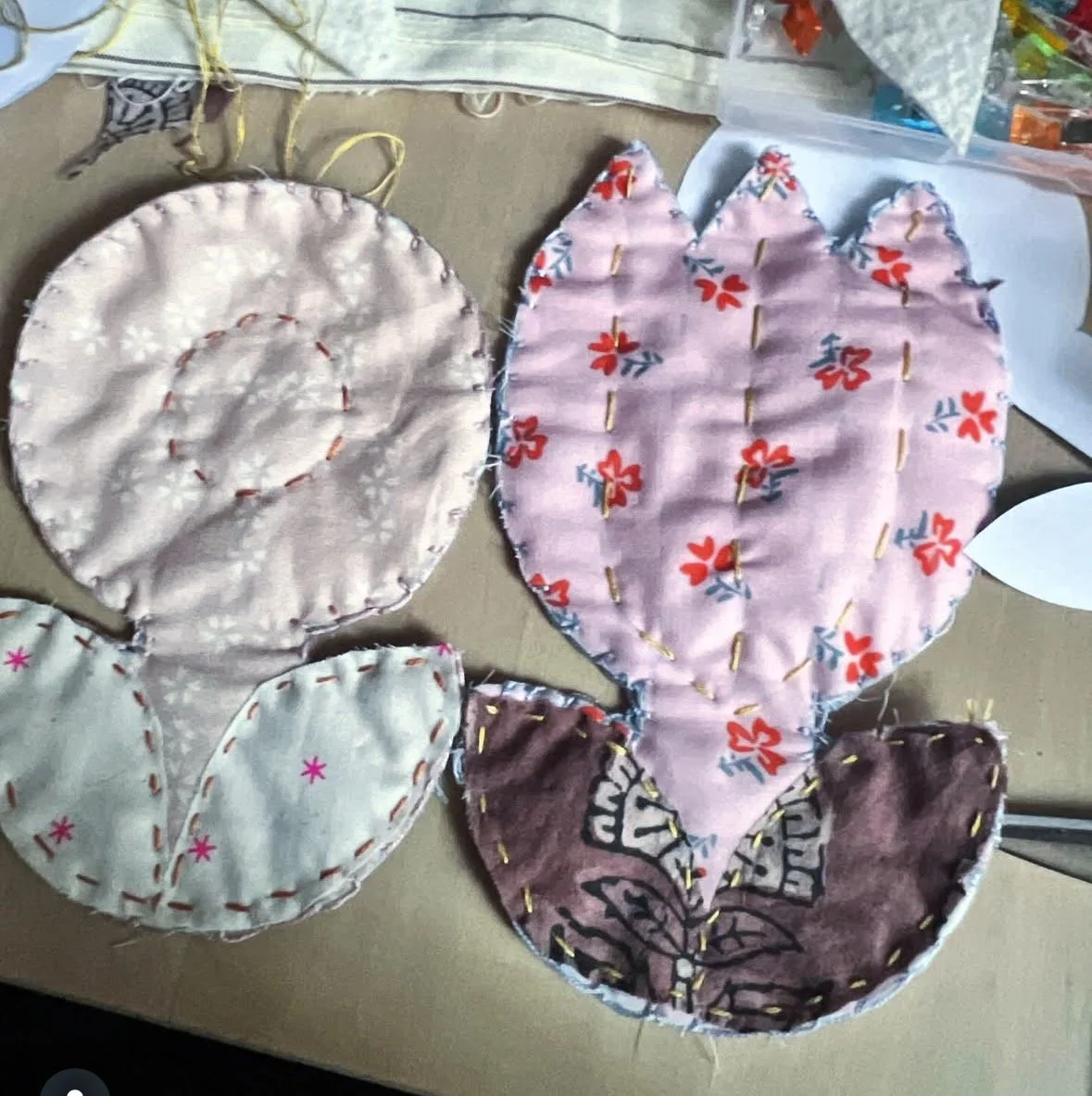Best Hand Stitching Tutorials for Beginners and Beyond: Find the Right Project for You
One of the most common questions I’m asked is:
"Which of your tutorials would be best for me?"
The answer depends on what you’re looking for. Are you new to stitching and want something simple to get started? Do you need a calm, grounding project to help ease a busy mind? Or are you looking for a more expressive, open-ended experience where you can play and experiment?
Each of my tutorials has its own rhythm—some are structured with clear templates, others are more intuitive and freeform. Below, I’ve shared a little about each one to help you decide where to begin.
But before you dive in…
Start Here: Mastering Needle Turn Appliqué
If you haven’t already, I’d highly recommend downloading my free guide: ‘Mastering Needle Turn Appliqué.’
This technique is at the heart of many of my tutorials, and if you're new to hand stitching, it’s the perfect place to start. It will give you a strong foundation and build your confidence before moving on to more detailed projects.
Sign up here to download your free copy!
Mindful Slow Stitch Wallhanging
Best for: Calming a busy mind, working intuitively
Why choose this one?
This tutorial is all about slowing down, tuning in, and stitching without pressure. Using scrap fabrics and a simple running stitch, you’ll create a tactile piece that gently unfolds over time. There’s no right or wrong—just a meditative rhythm of needle and thread, evolving with your mood and materials. While many choose to make a wallhanging, your stitching could just as easily become a meditation scroll, be incorporated into a functional item, or even used to reinforce and mend worn patches in clothing, much like traditional Japanese boro. It’s a beautiful project for those seeking stillness or reconnection, and a comforting one to return to whenever life feels full.
Student Examples
From left to right: Claire Holt, Rachel Mohun,
Abstract Botanical Zero Waste Appliqué
Best for: Creative freedom and playful making with zero waste
Why choose this one?
This project invites you to observe nature and reimagine it in abstract form, using a positive and negative cutting technique that makes use of the entire piece of fabric—nothing goes to waste. You'll create layered compositions from your cut shapes, incorporating both the motifs and their offcuts to build a beautifully balanced design. There are no templates—just your own interpretation of botanical forms. It’s the perfect put-down-and-pick-up project: cut a batch of background squares in advance so you always have something ready for when your hands feel the urge to stitch. Playful, flexible, and full of personal expression, this is a meditative way to stitch that honours both creativity and resourcefulness.
Student examples
Make a Pair of Abstract Mini Quilts
Best for: Developing composition skills, exploring contrast and balance
Why choose this one?
These mini quilts offer a satisfying mix of structure and freedom. You’ll learn how to create small patchwork pieces using your own fabric combinations, with guidance on layout, layering, and finishing techniques. Working in pairs allows you to explore ideas in a series—great for gaining confidence and finding your voice. The small scale keeps it manageable and leaves room to experiment with colour, shape, and proportion.
Student Outcomes
From left to right: NTU Sustainability students, Fumi Foster, Sonia , Kim Wilhelm
“I enjoyed the course very much. The explanations were understandable and very interesting. Making the Abstract mini quilts was very satisfying and I am very happy with the result - so many new possibilities have opened up for me. I’m already thinking about which course I’ll choose next.”
Found Shapes Patchwork
Best for: Lovers of modern abstract compositions, making use of fabric scraps
Why choose this one?
If you love bold, modern patchwork and have a pile of oddly shaped fabric scraps that you don’t know what to do with—this is the perfect tutorial for you! Instead of working with precise measurements, you’ll arrange and stitch together found shapes, letting composition and colour guide your decisions. It’s a brilliant next step if you enjoyed the Abstract Mini Quilts tutorial and want to explore freeform patchwork at any scale.
Best for: Creative freedom, playful making, and intuitive stitching
Why choose this one?
This project invites you to observe nature and reimagine it in abstract form, using a positive and negative cutting technique that makes use of the entire piece of fabric—nothing goes to waste. You'll create layered compositions from your cut shapes, incorporating both the motifs and their offcuts to build a beautifully balanced design. There are no templates—just your own interpretation of botanical forms. It’s the perfect put-down-and-pick-up project: cut a batch of background squares in advance so you always have something ready for when your hands feel the urge to stitch. Playful, flexible, and full of personal expression, this is a meditative way to stitch that honours both creativity and resourcefulness.
Student Outcomes
From left to right, Marita Rolin , Florence Lespinasse , @sab000000 Rosaleen
Learn Reverse Appliqué
Best for: Confident stitchers ready to deepen their technique
Why choose this one?
Reverse appliqué is a more advanced technique where you layer and stitch fabric, then cut away sections to reveal shapes underneath. It creates striking contrasts and layered textures, but it does require a good understanding of hand appliqué. If you’ve completed my free Mastering Needle Turn Appliqué guide, you’ll be well-prepared for this next step. It’s a deeply satisfying process and a wonderful way to explore shape, layering, and contrast.
Student Examples
Exploring Positive and Negative Space
Best for: Playing with balance and composition in a low-pressure way
Why choose this one?
This two-part video tutorial is a wonderful way to explore how shapes interact and how to create visual balance in your work. The first video introduces the Notan technique, using paper cut-outs to play with positive and negative space—an intuitive and playful way to experiment with composition before bringing out your fabric. In the second video, you’ll learn how to adapt your paper design into a textile version using felt, which removes the worry of frayed edges and adds a lovely raised texture. Decorative stitching brings the final piece to life. It’s an ideal project for anyone wanting to develop their design instincts without overthinking the stitching.
Student Outcomes
Left to right: 1 and 2 by students of Ratcliffe college, 3 Florence Lespinasse , 4 Julie Yogasundram
“I really enjoyed this class. Supported with clear videos and written materials it was a really fun workshop. Very affordable. Excellent value for money. Thank you so much. I will be trying more.”
Make a Flower Mini Quilt
Best for: Beginners who like a structured, creative project
Why choose this one?
This joyful project is great for anyone just starting out, or looking for a fun, decorative make. It includes flower templates to guide you, which can be used exactly as they are or easily customised with your own fabrics, colours, and stitches. There’s a helpful balance of structure and freedom, making it a relaxed but rewarding sew. The finished mini quilt makes a beautiful handmade gift or a burst of colour for your own wall.
by Rachel Levine @studiobyrsl
Which Slow Stitch Project Will You Choose?
Each of these tutorials is designed with sustainability and slow making at their heart. You don’t need fancy tools or new materials—just a few fabric scraps, your hands, and a little time. They all encourage a mindful, thoughtful approach to stitching, making the most of what you already have to hand. Whether you’re drawn to bold abstract shapes, delicate hand appliqué, or quiet, meditative stitches, there’s space within each project to follow your own path.
The tutorials are filmed as if you’re sitting at the table next to me, sharing a calm, creative moment together. I talk you through each step in real time, so you can stitch along at your own pace. The techniques can be adapted in countless ways: switch up the colours, use different fabrics, scale the design up or down, or add your own stitching style to make it truly yours. Many of the processes are versatile and can be applied to anything from mending clothes to creating one-of-a-kind textile art.
Whether you're looking for stillness, structure, or freedom to explore, I hope this guide helps you find the right place to begin. And remember—it’s not about perfection, it’s about the joy of making slowly, with intention.



